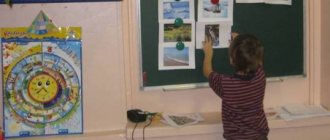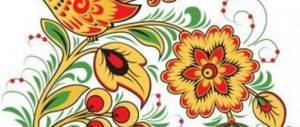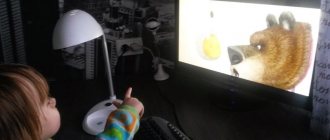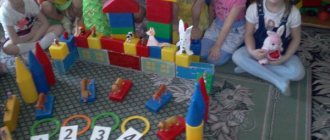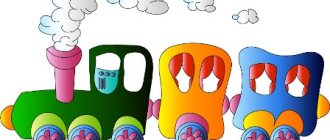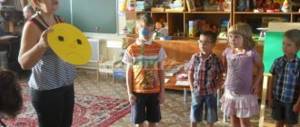Lesson summary on the topic: “The Red Book of Mordovia” (senior group)
Lesson summary on the topic: “The Red Book of Mordovia” (senior group) Purpose: to deepen the understanding of the Red Book of Mordovia; expand knowledge about how people care for animals and plants, how they protect nature (they create nature reserves and wildlife sanctuaries). Methodological techniques: using fairy-tale characters, asking children questions, looking at pages with photographs and pictures of the Red Book, reading a poem, asking riddles. Equipment: Red Book of Mordovia (made jointly by teachers and parents), toys - dolls Old Man - Lesovichok, bear. Preliminary work: Reading fiction about animals and plants, conversation about the reserves of Mordovia. Progress of the lesson. Educator: Today Mishutka and Old Man - Lesovichok came to visit us. They brought us the Red Book of Mordovia. Why do you think such a book was called Red? Children: Red is the color of danger. Educator: That's right, the color red, like a traffic light, warns people that there are few animals and plants listed in this book left in our republic and they need to be saved. Mishutka and the Old Man - Lesovichok (the teacher speaks for the dolls): Look, guys, this book is unusual. Guess what! (Leafing through the book) Children: The book has colored pages. Mishutka: Indeed, this book has colored pages, not white. The first pages are red. They indicate plants and animals that must be saved immediately, without the slightest delay. Educator: What rare animals and birds of Mordovia do you know? Children: Bison, beaver, marten, imperial eagle, black stork, golden eagle, crane, etc. Lesovichok (shows a photograph of a crane). The crane is a beautiful, proud bird. It’s not for nothing that legends and songs have been written about him. For their nesting, cranes choose remote places where people rarely or never appear. They build nests in dense grass. Cranes walk and run beautifully and never perch on trees. They feed mainly on plant foods, and also eat a variety of insects, worms, and frogs. Cranes throughout Mordovia have become rare birds. Hunting them is prohibited. Educator: What rare plants do you know? The children answer, the teacher adds: cranberry, covil, white water lily, snowdrop, lily of the valley, etc. Mishutka: Listen, guys, to the riddle - In a thawed patch in the forest I was the first to meet spring. I'm not afraid of frost, I'll be the first to break out of the ground. Children: This is a snowdrop. Mishutka shows pictures of snowdrops. Mishutka: Snowdrops come in different colors - white, blue, purple, so they are often confused with other primroses - lungwort, anemone, corydalis. Snowdrops cannot be picked. They are listed in the Red Book. Educator: The next pages in the book are yellow. If a traffic light is yellow, what does it mean? Children: Attention! Educator: The Yellow Pages remind us that these plants and animals are becoming scarce - they need to be saved! We open white sheets. On them, the signs are the rules of behavior in nature: if they are not followed, then plants and animals will get into trouble. Next are the green pages. One can only be glad for the plants and animals depicted on these pages - there are many of them. People came to their aid in time. How do you think they did it? Children: We stopped hunting animals, picking flowers, and created nature reserves and sanctuaries. Educator: All types of plants and animals are protected in nature reserves and sanctuaries. The owners in them are animals and plants; people have no right to build there, lay roads, or hunt. In Mordovia we have a state reserve named after in the Temnikovsky district, 13 reserves. What natural monuments are there in the city of Saransk? Children: Parks, botanical garden. Educator: Each country has its own Red Book. Why do you think? Children: Because they contain different plants and animals. Educator: So we have looked at all the pages of our Red Book. You and I must protect all the plants and animals that fall into it. When we meet them in the forest, meadow or river, we will tell them: “We will not offend you.” Now listen to the poem “The Red Book” (B. Dubrovin). So many different animals and birds are protected by the Red Book, So that the many-faced expanse can survive For the sake of the light of the coming lightning. So that the deserts do not dare to come, So that souls do not become empty, Animals are protected, Snakes are protected, Even flowers are protected. The Red Book is Red! This means nature is in danger! This means you can’t waste even a moment. It calls to preserve all living things, The Path does not call in vain. Red Book, Red Book! Literature. 1. Methods of environmental education in kindergarten. M., Education, 2004 2. Specially protected natural areas of the Republic of Mordovia. Saransk, Mordkiz, 1997
